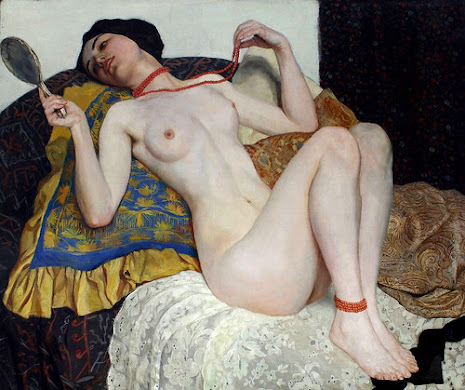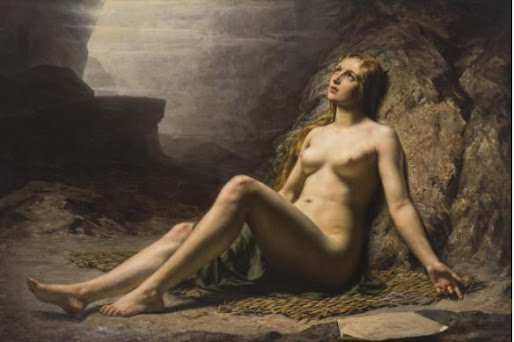"The Magic Circle", John William Waterhouse, 1886
A night-time setting creates a hazy, mysterious atmosphere where we see a sorceress in the midst of performing a ritual. With a snake coiled around her neck, she draws a fiery circle around herself and her boiling cauldron. hooded figures watch from the entrance of a cave. The cliff-top is lined with onlookers, an unlit city looming over them. The woman holds a sickle that she has used to cut the ingredients for her potion; a pile of poppies and other flowers lie beside the fire, and still more are thrust through the sash at her waist. The plume of steam rising from the cauldron is about to coalesce into form in the manner of ectoplasm. Outside the circle the landscape is bare and barren; a group of rooks or ravens and a frog - all symbols of evil and associated with witchcraft - are excluded. But within its confines are flowers and the woman herself, objects of beauty. The early Anglo-Saxon hairstyle and the Greek or Persian image of figures at battle on the otherwise medieval dress, the druidic knife and the arid, vaguely Mediterranean landscape present a confusing mélange of civilizations.





Comments
Post a Comment